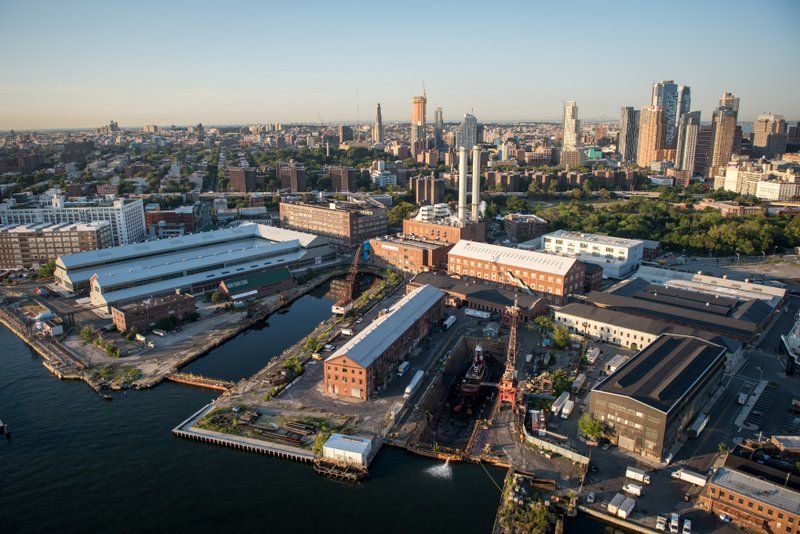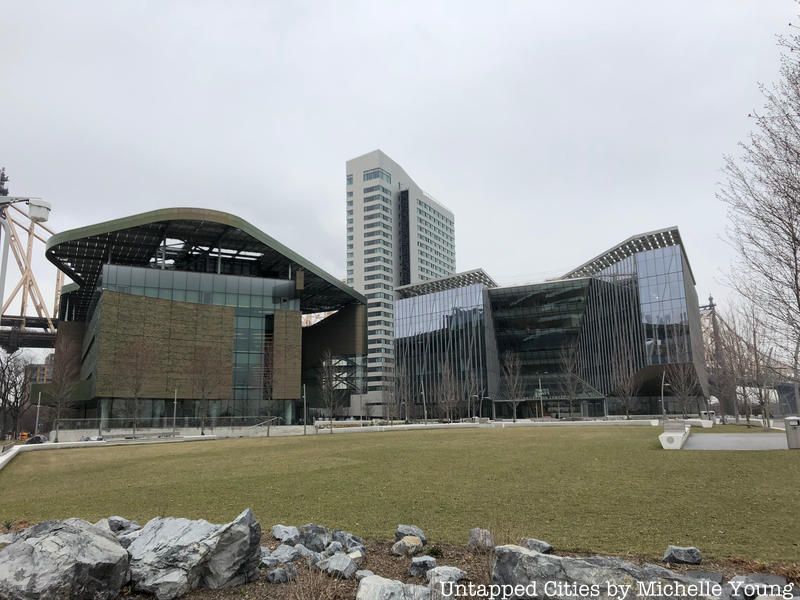See the New Times Square New Year's Eve Ball Up Close
Find out how you can take home a piece of the old New Year's Eve ball!


Solar generated energy is becoming one of the most common means of heat and electricity production throughout the country. Not only is solar power environmentally friendly, but its potential cost in savings, tax credit eligibility, and ability to reduce demand on major electrical grids has attracted the attention of major developers and homeowners in cities across the country. New York City is no exception, with solar energy projects growing a tremendous 2,951% since 2011 across the city’s five boroughs
New York City’s lead in the solar energy game comes as no surprise following Mayor Bill de Blasio’s ambitious goal to cut all greenhouse gas emissions within the city 80% by 2050, as well as Governor Andrew Cuomo’s aim to require half of New York State’s total energy to come from renewable sources by 2030 under of the NY-Sun Initiative (part of the Governor’s larger Reforming the Energy Vision Framework plan). Below are some of the city’s largest solar power projects operating today.
The CUNY System (City University of New York) is a leader in solar power initiatives in the city. Developed as a collaborative with the Port Authority of New York/New Jersey, the projected serves as a means of reducing energy utility costs, improving energy efficiency, and institutionalizing environmental awareness for the entire public university system.
Sustainable CUNY was one of the first major actors in the city’s solar power transition, working with Con Edison to map solar power “strategic zones” for maximized usefulness in each borough. Over the past decade CUNY has joined forces with the City of New York and New York City Economic Development Council (NYCEDC) to develop and implement action plans vital to moving New York City in the right direction.
CUNY has taken a strong role at home, making environmental sustainability a cornerstone of its mission. In 2012, CUNY’s thirteen senior colleges were tasked with developing individual campus energy budgets. According to CUNY, Campus Sustainability Plans were designed around eight pillars of sustainability to create actionable steps in reaching the system and the state’s environmental goals.
While the thirteen senior colleges of the CUNY system were given full control over their energy plans in 2012, these budgets will in turn serve as the foundation of future Sustainable CUNY Conserves. Using these pillars, campus sustainability plans identified over 800 actions to be taken within the system to creating a healthier, more sustainable future for students and the city.
CUNY has continued its work in reducing both its and the city’s collective carbon footprint. In November of 2017, the Borough of Manhattan Community College (BMCC) became the site of the largest public solar panel installation in Manhattan, with the capability of generating 1,000 kilo Watt hours (kWh) [amount of energy consumed] of electricity per day.
According to BMCC/CUNY, up to 200 kWh of added power will be stored as backup power for cases of extreme weather or stress on the site’s utilities. The remainder will be released back into the city’s main electrical grid.

Stuyvesant Town, commonly abbreviated “StuyTown”, is a co-op located in the East Village of Manhattan. Currently the complex is undergoing the construction of a 22 acre rooftop solar panel power, which when completed in 2019, will make the apartment complex the largest private multi-family solar installation project in the country.
The 3.8 Megawatt (DC) project will consist of 9,671 solar panels and will power 1,000 apartments annually. According to Blackstone and Ivanhoé Cambridge, the panels will offset approximately 63,000 tons of carbon dioxide emissions, the equivalent of removing 12,000 cars from the road a year.
Stuyvesant Town has already been making strides in becoming more ecofriendly. The complex already administers one of the largest composting programs in the city. This addition of the solar project will no doubt solidify the complex as one of the most environmentally-forward multi-family residences in the country.

Photo courtesy Brooklyn Navy Yard
The Brooklyn Navy Yard is a rapidly growing microcity located in the former shipping industrial hub nestled in between Brooklyn Heights, Fort Greene, and Williamsburg containing over 300 businesses. The large-scale industrial hub, once the site of the United States Navy 1806 to 1966, is gaining attention once again for its implementation of 3,152 rooftop solar panels in September 2016.
The panels currently generate 1.1 million kilowatts (kW) [amount of energy generated] of energy (enough to power 88 homes and reduce carbon dioxide emissions by 1.4 million pounds per year), enough to create the majority of the energy that the industrial hub uses daily.
For the Navy Yards, the introduction of solar renewable energy to the industrial hub comes as a means of reducing the city’s collective carbon footprint and moving towards supporting the complex’s future. “We’re doubling jobs at the navy yard, and those workers and machines will need sustainable energy,” Deputy Mayor Alicia Glen said in an interview with the New York Daily News in September 2016.
According to Brooklyn Navy Yards CEO and President David Ehrenberg, tenants also appreciate the increased environmental consciousness and peace of mind that solar power provides.
Funding for the project cost $625,863.83 and was covered entirely by NYSERDA incentives and ConEdison Solutions. According to the Office of Mayor de Blasio, the Brooklyn Navy Yards project will allow the City to make a significant step towards the Mayor’s goal of generating 100 megawatts yearly from public buildings and sites by the year 2025.

The Cornell Tech Campus, an annex of the larger contracted Ivy League University and State University of New York (SUNY) officially opened its doors in September 2017, taking the spot as the single largest solar energy installation in Manhattan providing over 850 kW of energy for the campus’ buildings and facilities.
The system features solar energy as a central part of the compound’s design with 2,300 individual solar modules set atop the Emma and Georgia Bloomberg Center and the Bridge to power both major buildings. A cooling center for the site’s energy modules can also be found at the Bloomberg Center.
The project was backed by the New York State Energy Research and Development Authority (NYSERDA) which has provided over $1 million dollars to advancing the development of solar projects throughout the state. In addition to solar energy, the campus also intends to utilize geothermal heating technology, green roof, and the recycling of rainwater as means of maximizing use of natural resources and achieve net zero energy efficiency.
Cornell Tech’s Roosevelt Island campus will continue to open in a three-phase plan with completion slated for 2043. As founding Dean of Cornell Tech and Vice Provost of the University Dan Huttenlocher stated in March 2017 statement, “Cornell Tech will have some of the most environmentally friendly and energy-efficient buildings in the world… we’re reinforcing our commitment to innovation and sustainability by pushing the boundaries of current energy efficiency practices and setting a new standard for building in New York.”

NextGen NYCHA is the New York City Housing Authority’s (NYCHA) plan to revitalize aging infrastructure throughout the city’s public housing developments through environmental-focused sustainability initiatives. At the top of the Authority’s sustainability plan was the installation of over 2.5 million square feet of solar panels across public housing complexes throughout the city, generating enough energy to power 6,600 of the city’s 178,000 units (also making the NYCHA the city’s “largest landlord” according to Curbed).
The first of these panels were installed in 2017 and though this amount only accounts for a little less than 4% of the city’s total public units, the steps being taken will significantly reduce existing carbon emissions created by traditional means of energy including fossil fuels by as much as 30% over the next decade.
This reduction also has the potential to significantly improve access to clean air for residents, as 43% of public housing developments are located in areas that see the most hospitalizations for asthma-related illnesses and emergencies.
In addition to solar paneling, under the NextGen NYCHA the Authority is also making strides to improve access to urban farming, the use of energy resources, and overall the quality of living throughout New York City’s public housing through a four goal system to “transform[ing] aging buildings and infrastructure into sustainable, healthy communities” for the twenty-first century.
With these and other solar power installations taking New York City by storm, it is likely that New York will continue to lead in the clean energy revolution.
Next, check out a map of New York’s potential solar powered rooftops as well as ten of the most exciting sustainability projects currently unfolding in New York City. Rachel Bruce is a senior Growth and Structure of Cities Major at Bryn Mawr College and a first-year Master of City and Regional Planning Candidate at the University of Pennsylvania. Get in touch with Rachel at @rachelabruce on Twitter and Instagram.
Subscribe to our newsletter